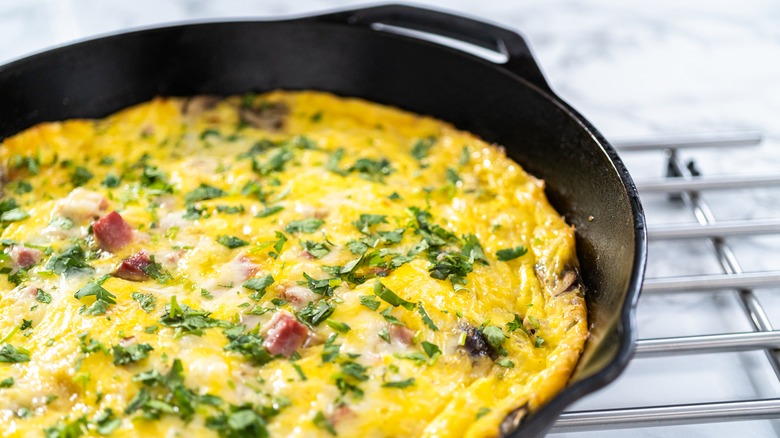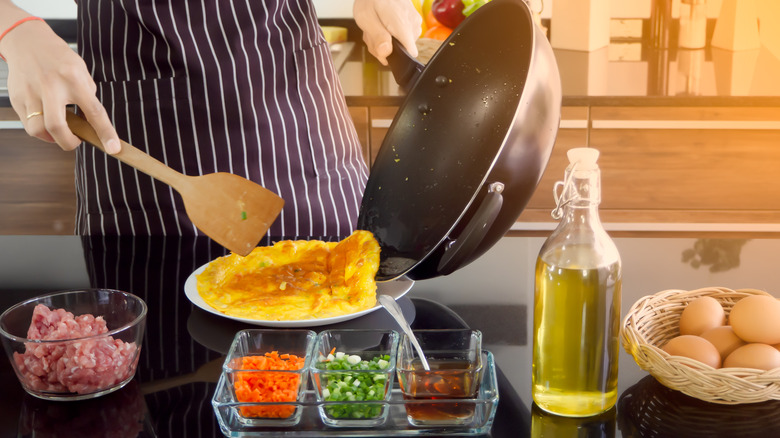Frittata Vs. Omelet: Is There A Real Difference?
Humans have been eating eggs for thousands of centuries. According to Food Timeline, there are records of humans domesticating fowl for their eggs in India as far back as 3200 B.C.E. The Romans also regularly consumed eggs, and would frequently encounter communities throughout Europe doing the same during their expansion.
Today, eggs are still one of the most common items on any grocery list. According to Statista, in 2021, the average American consumed about 285 eggs over the course of the year, and that number is predicted to increase to 288 in 2022.
Two of the best egg-based entrees around are frittatas and omelets. The two dishes are European in origin, both use cooked eggs as their base, and are easily customized with a variety of fillings and toppings, per Kitchn. On a base level, these two dishes sound very similar, but there are a few key differences you should be aware of before you start cracking eggs.
Differences in ingredients
One of the main differences between these two egg-based dishes is the number of eggs used. Simply Recipes points out that standard omelets are usually made with two to three eggs. Frittatas, on the other hand, can vary in size depending on the pan being used, but we recommend working with at least 10 in our easy spinach frittata recipe. A big part of this has to do with serving sizes, as omelets are often meant for one person while frittatas are better for feeding a crowd.
Another difference between the two dishes is that frittatas bode well with a boost of fat from dairy (via Bon Appétit), while omelets are made with just eggs. Adding cream or whole milk helps the final frittata turn out light, fluffy, and nails the custardy texture that you're hoping for. On the other hand, for a light and fluffy omelet, some experts recommend adding a touch of water to the egg mixture, but never milk because it does not mix in well, per Food So Good Mall.
In terms of fillings, either is pretty flexible and can be customized to suit personal tastes and dietary needs. The more important quality is that both frittata and omelet fillings need to be pre-cooked to avoid soggy messes (via Bon Appétit).
How they're made
The cooking processes for omelets and frittatas start similarly with an egg mixture, but after the eggs are whisked together, the dishes diverge. When making frittatas, for example, it is important to use the correct pan because unlike the omelet, it's going to finish its cooking time in the oven, per Kitchn. This is because only one side of a frittata makes contact with the pan, and so the transfer to the oven's more radiant heat allows for the rest of it to set properly. They are also cooked at a low to medium-low temperature to keep the areas that are in contact with the pan from burning.
Omelets, on the other hand, spend all of their time on the stove. Spruce Eats points out that they're also cooked at a higher heat for less time to allow the eggs to mostly set before folding them over the ingredients that are placed in between the layers. Speaking of fillings, another key difference in the cooking processes of these two dishes is that frittata fillings are added to the pan at the beginning, while omelet fillings are added at the end, per Blue Jean Chef.
All in all, both of these egg dishes are simple to prepare and allow you to have an elevated breakfast or brunch in the comfort of your own home.


